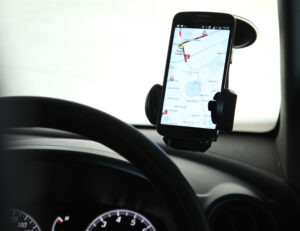WeMove Business Model- How this MaaS company makes money?
Technology can resolve several problems for a better living and this is the essence of the WeMove business model. WeMove is a mobile-based app that allows users to get to places on time without them having to worry about purchasing physical tickets. They don’t even have to worry about the scheduling or the mode of transport.
History of ticketless travel
One of the key components of using a MaaS model is ticketless traveling. By using a smartphone or a smart card, a user can enter and exit all the transportation modes needed for a specific journey.
However, all this is old stuff in Japan. The country’s biggest railway company JR East introduced a contactless rechargeable fare card in 2001. By the year 2004 Japan’s largest mobile phone supplier NTT DoCoMo developed wallet mobile. This machine served as electronic money, credit card, member card, and also as a ticketing mechanism for events and air travel. These two companies joined hands in 2006 to create Mobile Suica.
They moved the payments from smart cards to mobile phones. After that they built an extensive system of transit operators, retailers, and service providers to attain interoperability across various transit systems in the country.
Also Read
Mobility as a Service: Why is it a good choice?
Execution of MaaS
Public transport services are usually operated publicly or they are pretty heavily subsidized. The non-responsive and predefined transportation schedules feature only a smaller number of profitable routes. This is many times required for offsetting the losses from a large number of unprofitable routes that are operational in underserved sectors.
Responsive and dynamic ride-hailing services have gradually gained more traction in some of the profitable route zones. This has left public transport to operate only in underserved areas.
The more responsive and dynamic ride-sharing services have surely gained better traction in all these lucrative route zones leaving the public transit to work in the unprofitable routes operating in underserved areas. If you deploy smart mobility services without taking into consideration the existing mixture of public transition services, it means there are more unnecessary friction points in existence.
This can lead to the government viewing the smart mobility platforms more as a hindrance to the achievement of their objectives instead of being an enabling partner. More importantly, the consumers are left with a mess of fragmented mobility alternatives thereby complicating the task of identification of the best alternative for completing their journey.
The goal of the WeMove business model
The goal of the WeMove business model is to make getting from point A to B simpler, cheaper, safer, and cleaner than both options of personal car ownership and other individual options available currently. Almost all the cars sit unused for around 94% of the time. The average finance payment for these cars is close to $226 per month.
Mobility requires vertical innovation which means you can get a new way of thinking with the WeMove business model for making money. It is a fact that real innovation in the commuting and travel industry, can be delivered via smart mobility only via Mobility as a Service.
Also Read
PickMe Business Model: Success story of a customer centric strategy
Use of technology in the WeMove business model
The technology is available through machine learning, smart mobile phones, and 4G/5G networks. There is infrastructure available in the form of city networks, public transportation systems, and bicycle lanes. And, in the end, we have the general public that is interested in sustainability and cheaper and faster ways of getting around.
Car sharing is still in its infancy stages and micro-mobility is quickly becoming a huge sector in its own right. This has become possible due to the advent of E-scooter and bike subscriptions and rentals.
Despite all the avenues available with the innovation, there is still something, that can distract the business away from the core of the mission. It is companies cornering themselves into one part of the market rather than working as a fluid ecosystem of mobility and transport in a progressive system of economic and sustainable considerations.
The WeMove app allows the users to enter their departure location, and destination, and then they have displayed an efficient route by the database of traffic data, transport providers, and scheduling. The user will then book the ride, pay, and then use the in-app code as a ticket.
What can WeMove business model do for us?
The WeMove business model has the potential to rise to the objectives of consumers and municipal governments. While the consumers are just looking for an A to B transit, the city or municipal governments are usually looking for addressing issues of pollution and congestion.
The use of shared cars with the ride-hailing paradigm can decrease the number of vehicles required for satisfying the needs for personal transit. Similarly, micro-mobility modes such as e-scooters and e-bikes can decrease the role played by congesting larger vehicles. They can also ensure smaller journeys and provide a boost for active transport.
Also Read
Jugnoo: solving the issue of shared mobility worldwide
Although the potential of smart mobility is significant, the deployment of these smart mobility modes has resulted in friction with the existing mixture of mobility modes. One of the more visible impacts has been the introduction of micro-mobility modes in city streets. Another less visible and yet important aspect has been public transit cannibalization with the introduction of ride-hailing services. One of the recent studies in China has concluded that more than 33% of trips in public transit are cannibalized.
Payment modes for the WeMove business model
There are a couple of types of payment alternatives available with the WeMove business model. First is the monthly subscription and the second is the pay-as-you-go. Out of these two, the monthly subscription method allows the operator who can either be a third party or a public entity to buy the services in bulk for their users. Then they can pass along some discount to them.
The second alternative is the pay-as-you-go one which works similarly to the route planner app. Any trip could be organized as a single trip chain. However, the user will need to pay separately for every tag.
There are complexities involved in providing a service that spans several transportation modes. You can get multiple providers for one discounted fare and all this has perplexed several businesses.
The biggest stumbling block is making sure that every mode is correctly compensated, for its right portion. Some fare structures offered by service providers are complex and old. This issue needs to be addressed so that the general public can understand what they are paying for.
Also Read
Electric Vehicles in Last-Mile Delivery – A collaboration meant to succeed
The contactless fares for instance in London are capped with daily and weekly rates. This ensures that the user never has to pay more than the cheapest equivalent ticket.
The WeMove business model uses an integrated end-to-end version of pay-as-you-go where the users have to pay for the whole trip from point A to point B. You will get pricing integration from several modes. There is a system put into place for verifying the identification and management of fraud.
Conclusion
WeMove is one of the more sophisticated service providers that use data they have collected about consumer movement across transit networks for understanding travel patterns, calibrating the demand and supply, and optimizing the network. However, this is a challenging aspect because of the need to get the critical mass and yet be responsive to consumer demand.
They also have to break even on the service they are providing in the process. Some on-demand services have failed because of lack of flexibility and scaling available to them. If you are planning to develop the future mobility app like WeMove get in touch with the pros at Jugnoo for expert assistance.





